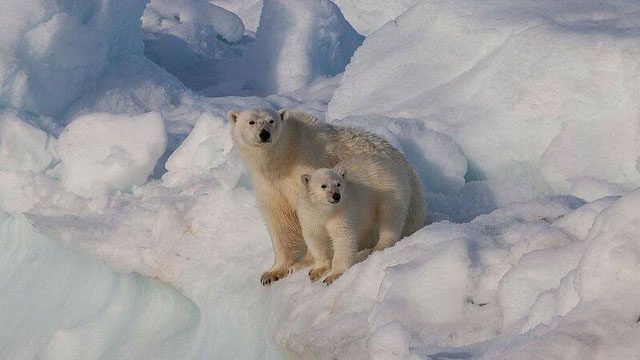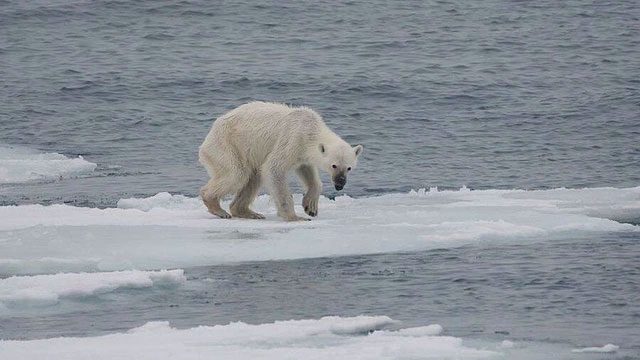With climate change melting ice in the Arctic and human encroachment on their habitats, polar bears are increasingly facing the risk of lethal confrontations and cannibalism.
According to expert Ilya Mordvintsev, the phenomenon of polar bears eating their own kind is not new, but it is now spreading at an alarming rate.
He stated: “Instances of polar bears cannibalizing each other have existed for a long time, but we are concerned that such cases were previously rare, whereas they are now being reported quite frequently”.
As reported by The Guardian, Mordvintsev, a senior researcher at the Severtsov Institute of Ecology and Evolution in Moscow, believes that the cause is food scarcity, with melting ice also being a factor.
Unfortunately, this is closely related to the global climate crisis.

Previously, polar bears were known to occasionally cannibalize each other, but this rare occurrence is now becoming widespread. Males will attack females and their cubs as food shortages become more severe.
Mordvintsev explained: “In some seasons, there is not enough food, and large males attack females along with their cubs. Currently, we are receiving reports not only from scientists but also from numerous oil workers and defense personnel who have reported sightings of polar bears cannibalizing each other”.
Just a few winters ago, polar bears hunted in an area stretching from Ob Bay to the Barents Sea. This route has now become a popular shipping lane for liquefied natural gas (LNG) carriers.
Mordvintsev noted: “Ob Bay has always been a hunting ground for polar bears. But at present, this area has almost no ice year-round”.
The researcher has no doubt that gas extraction in the area, along with the commissioning of new LNG plants in the Arctic, is related to this concerning environmental change.

Polar bears are struggling against melting ice, rising temperatures, human activity, and food scarcity without any assistance.
According to scientist Vladimir Sokolov in St. Petersburg, it is clear that the polar bear population in Norway’s Svalbard archipelago has been particularly hard hit. For instance, the unusually warm weather on Spitsbergen Island has reduced the typical presence of ice and snow.
Researchers like Sokolov have been closely monitoring how many polar bears are moving away from their traditional hunting grounds. To illustrate the devastating extent of climate change in the region, Arctic ice levels at the end of summer have decreased by 40% over the past 25 years.
Sokolov predicts that these animals will eventually be forced to hunt along coastlines or in high-latitude archipelagos. In other words, polar bears hunting on sea ice may soon become a thing of the past.

Polar bears typically use floating ice to hunt seals. However, the amount of ice has decreased by 40% in the past 25 years, forcing polar bears onto land, where they can no longer hunt as effectively.




















































